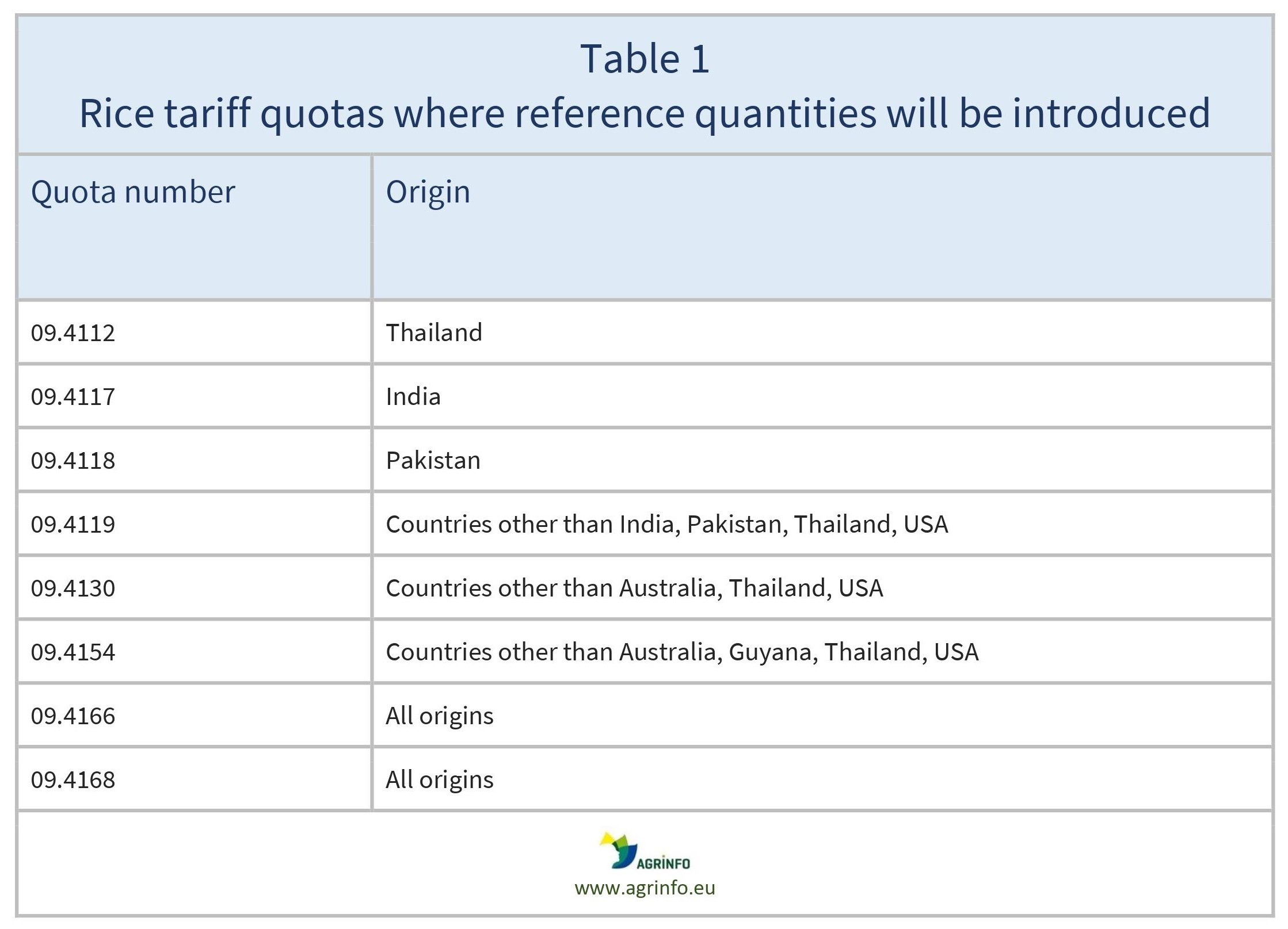Rice tariff quotas
- Tariffs & quotas
- Trade
Summary
The EU has revised its rules on the management of rice tariff quotas. As demand for certain rice quotas has been very high, the EU has introduced reference quantities to support the management of these quotas.
EU introduces reference quantities for management of rice tariff quotas
Commission Implementing Regulation (EU) 2024/2652 of 10 October 2024 amending Implementing Regulation (EU) 2020/761 with regard to the management of certain tariff quotas in the rice sector, the adjustment of cheese export tariff quotas for the United States and an update of the technical specifications for the IMA1 certificates for the import of dairy products from New Zealand
Update
The EU has revised its rules on the management of rice tariff quotas. As demand for certain rice quotas has been very high, the EU has introduced reference quantities to support the management of these quotas.
Impacted Products
Rice
What is changing?
There is great demand among importers for certain tariff quotas in rice. Previously, operators could apply for any quantity of rice for the quotas set out in Table 1, provided the quantity did not exceed the total quantity available for the tariff quota period (Regulation 2020/761, Art. 5).
Under the new rules, rice importers may not apply for a quantity of quota beyond their reference quantity. This is based on imports from the previous 2 years (both within and out of quota) from an origin within the scope of the quota, and cannot exceed 15% of the quantity available in the quota (Regulation 2020/760, Art.9). The proposed rules also introduce changes related to imports of New Zealand dairy products and cheese from the USA into the EU.
Timeline
The new rules apply from 23 November 2026.
Background
For further information on EU tariff quotas, see Import tariffs and tariff rate quotas explained.
Resources
Commission Implementing Regulation (EU) 2020/761 as regards the management system of tariff quotas with licences
Commission Delegated Regulation (EU) 2020/760 as regards the rules for the administration of import and export tariff quotas subject to licences
Sources
Commission Implementing Regulation (EU) 2024/2652 with regard to the management of certain tariff quotas in the rice sector, the adjustment of cheese export tariff quotas for the United States and an update of the technical specifications for the IMA1 certificates for the import of dairy products from New Zealand
Tables & Figures

Source: Regulation 2020/761, Annex III
Disclaimer: Under no circumstances shall COLEAD be liable for any loss, damage, liability or expense incurred or suffered that is claimed to have resulted from the use of information available on this website or any link to external sites. The use of the website is at the user’s sole risk and responsibility. This information platform was created and maintained with the financial support of the European Union. Its contents do not, however, reflect the views of the European Union.
EU introduces reference quantities for management of rice tariff quotas
Commission Implementing Regulation (EU) 2024/2652 with regard to the management of certain tariff quotas in the rice sector, the adjustment of cheese export tariff quotas for the United States and an update of the technical specifications for the IMA1 certificates for the import of dairy products from New Zealand
What is changing and why?
The EU has amended its management of the rice quotas listed in Table 1. It has introduced limits to the quantity of rice that can be imported based on an operator’s imports from the previous 2 years.
Timeline
The new rules will apply from 23 November 2026.
Tables & Figures

Source: Regulation 2020/761, Annex III
Disclaimer: Under no circumstances shall COLEAD be liable for any loss, damage, liability or expense incurred or suffered that is claimed to have resulted from the use of information available on this website or any link to external sites. The use of the website is at the user’s sole risk and responsibility. This information platform was created and maintained with the financial support of the European Union. Its contents do not, however, reflect the views of the European Union.
